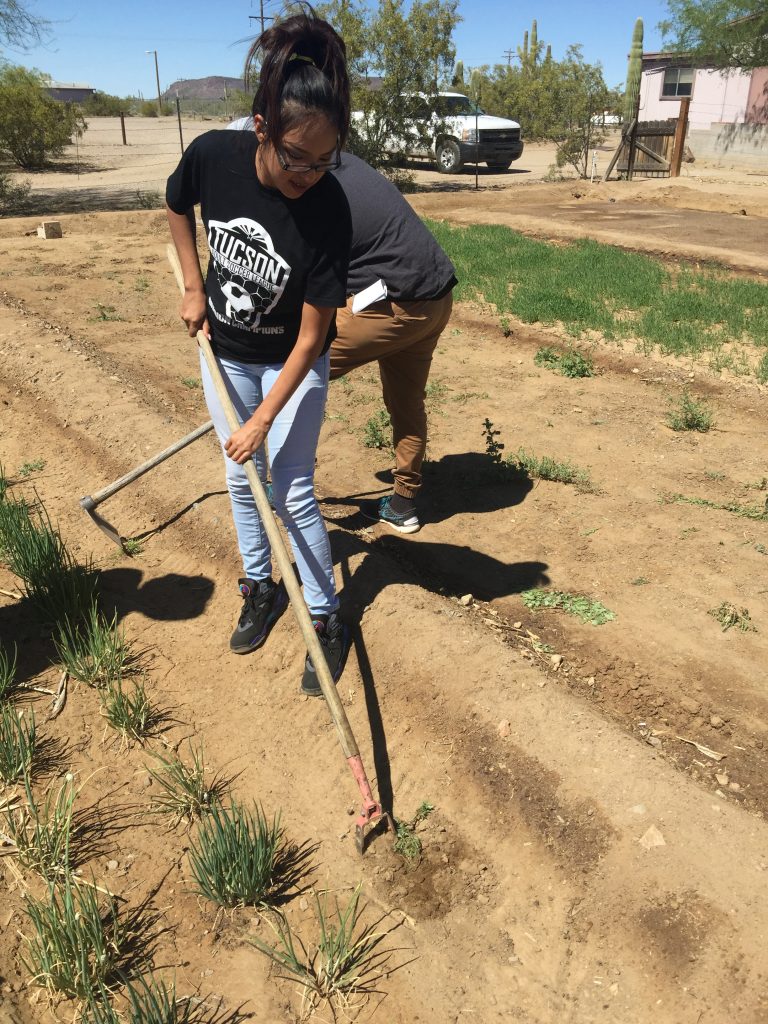Currently, only mainstream land grant universities are eligible for funding through the Federally Recognized Tribes Extension Program, which supports Cooperative Extension programs on reservations. New legislation will finally allow tribal colleges to compete. It’s a step in the right direction, Native educators say.
By Melanie Lenart

New competitive funding opportunities are opening up for tribal colleges and universities, including a federal extension program that will be accepting proposals in 2021. Even as options increase, though, the hope of providing stability with long-term programming remains elusive.
One of the new opportunities involves the Federally Recognized Tribes Extension Program, known as FRTEP (pronounced “fur-tep”), which provides funding for Cooperative Extension programs within federally recognized tribes. Currently, only mainstream land grant universities are eligible for FRTEP funding. For the 2021 funding cycle, tribal colleges and universities will be eligible to compete for these FRTEP funds for the first time.
“That’s something that we fought a long time for and we’re really excited that through the farm bill those programs opened up,” noted Carrie Billy, president and CEO of the American Indian Higher Education Consortium.
Tribal colleges and universities have until Feb. 15 to provide feedback on this federal extension program, which is designed to promote prosperity in Indian Country.
Amendments to the 2018 farm bill (more formally known as the Agriculture Improvement Act of 2018) authorized tribal colleges and universities (TCUs) to apply for FRTEP funding and two other programs: Children, Youth and Families at Risk (CYFAR), and a program known as McIntire-Stennis, which provides funding for research programs at institutions offering a bachelor’s degree in forestry.
As with most of the funding available to tribal college extension programs, funding from FRTEP can be short-lived. Every four to five years, depending on the program, TCUs must reapply for the competitive grants to launch programs, with no promise of continuation.
“They’re competitive, but at least we’re able to compete,” Billy added in comments made to representatives from TCUs attending a conference in Denver. “So that’s exciting.” There’s no projected increase in available FRTEP funding, so the change potentially means more institutions will be competing for the same kitty, typically about $3 million a year.

Trent Teegerstrom, Arizona’s associate director for tribal extension programs, expressed concern that the change ultimately could be “destabilizing” for tribal programs. FRTEP supports seven full-time employees in his program, which helps serve the approximately 235,000 individuals identified in the 2010 Census as members of federally recognized tribes in the state.
Teegerstrom and others point out that the continued need to compete for limited funding, which is the case for other NIFA-funded grants for tribal colleges as well FRTEP, puts tribal colleges at a disadvantage compared to the other members of the land grant system.
Tribally controlled colleges joined the official list of land grant institutions in 1994. Many large state universities and several elite private institutions have been operating under the land grant umbrella established in 1862, while numerous historically black colleges joined the roster starting in 1890.
In a 2016 paper in the journal Rangelands, Teegerstrom and two colleagues working with lead author Joseph Brewer make the case that the competitive approach for FRTEP funding needs a more extensive revamping than the current change underway. They note that the original intent of the FRTEP legislation was to establish 90 long-term Cooperative Extension offices on tribal lands across the nation, along the lines of the extension offices found in 97 percent of U.S. counties.
“Why do you make tribal extension agents have to fight for their jobs when the county extension agents are locked in?” Teegerstrom said during a Feb. 5 phone conversation.
The National Congress of American Indians made similar points in a resolution passed in 2010, noting that only 29 full-time employees served as “extension faculty dedicated solely to Indian reservation extension education,” serving only about 4 percent of federally recognized tribes. The resolution called for adding 60 offices to serve tribes with a non-competitive “formula-funded program similar to county Extension programs.”
About $300 million a year in formula-funded programs—which helps support about 9,000 full-time employees without the need for continually reapplying—goes to the 1862 institutions. About $50 million in formula funding goes to the historically black colleges that joined the land grant system under the 1890 legislation.
For the tribal colleges, as of 2020 NIFA was providing about $13 million annually, with an estimated $5.7 million for extension and outreach and about $4 million for education in agriculture and natural resources. TCUs must submit four-year project plans by a specified deadline to receive this funding, although NIFA splits the funds beforehand so every qualifying TCU that meets the deadline gets a share. The TCUs do share an additional $3.4 million or so in discretionary funding based largely on student count under a program known as Endowment, again to support agriculture and natural resources.
Under FRTEP, about $2.9 million a year in competitive funding was offered for programs to the 1862-authorized institutions serving tribes in the 2017 call for five-year proposals.
FRTEP funding supports efforts in agriculture and natural resource management as well, but also economics and culture and language preservation, all under an overarching NIFA goal to support “rural-urban interdependence and prosperity.”
The ongoing call for comments gives tribal colleges and others a chance to consider whether the designated goals for the program could use revision. Currently, the FRTEP program focuses on the following efforts: 4-H and other programs for youth; increasing productivity among farmers and ranchers, and community development, which includes workforce development, food-focused efforts, and culture and language preservation.
Erin Riley, a NIFA National Program Leader who directs tribal programs, encouraged representatives from tribal colleges attending an October conference to take advantage of this new opportunity by applying for FRTEP funding. She acknowledged that TCUs are sometimes hesitant to compete with the larger institutions on grants, but noted that the work done by tribal colleges was often more relevant to their communities than projects headed by larger institutions.
In a Feb. 3 email response to questions by Native Science Report, she added, “Tribal programs that NIFA funds, including the FRTEP and TCU programs, are better than what the larger programs at the big institutions are doing because they are community based.”
Those interested in making comments about the goals for FRTEP funding can do so at the following link:
Links to additional information about FRTEP and other programs discussed in this article:
FRTEP program:
https://nifa.usda.gov/program/federally-recognized-tribes-extension-grant-program
CYFAR program:
https://nifa.usda.gov/program/children-youth-and-families-risk-cyfar
McIntire-Stennis program:
https://nifa.usda.gov/program/mcintire-stennis-capacity-grant
Rangelands paper by Joseph Brewer, Joseph Hiller, Shawn Burke and Trent Teegerstrom:
https://www.sciencedirect.com/science/article/pii/S0190052815001340
Video featuring Arizona’s tribal extension programs:
https://cals.arizona.edu/arec/video/cooperative-extension-partners-arizona-tribes
The U.S. Land-Grant University System: An Overview
https://fas.org/sgp/crs/misc/R45897.pdf
Melanie Lenart, Ph.D., is supported by a NIFA educational grant via Tohono O’odham Community College, where she has served since 2015 as the Agriculture Instructor. The information in this article does not reflect the views of Tohono O’odham Community College.
